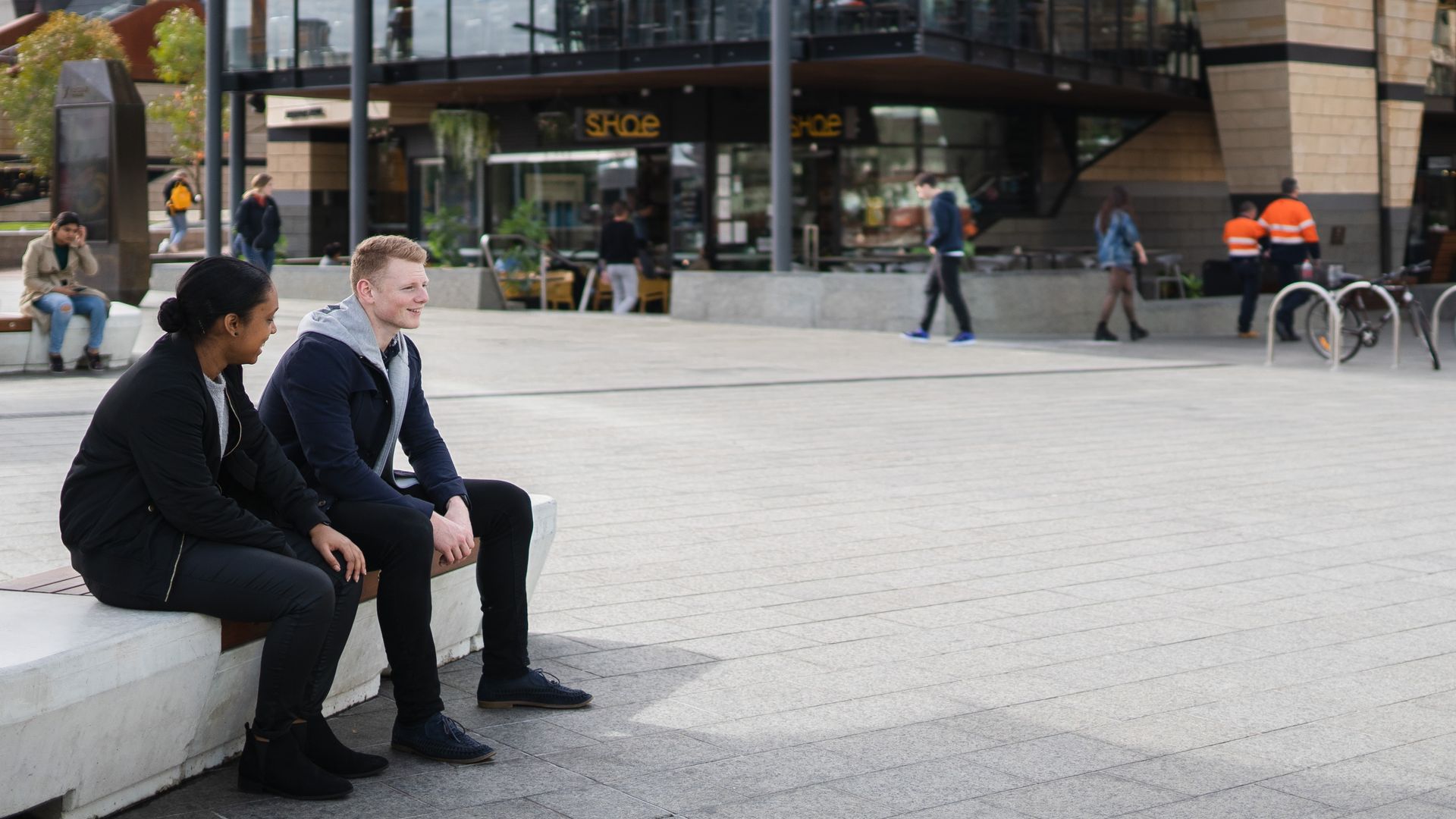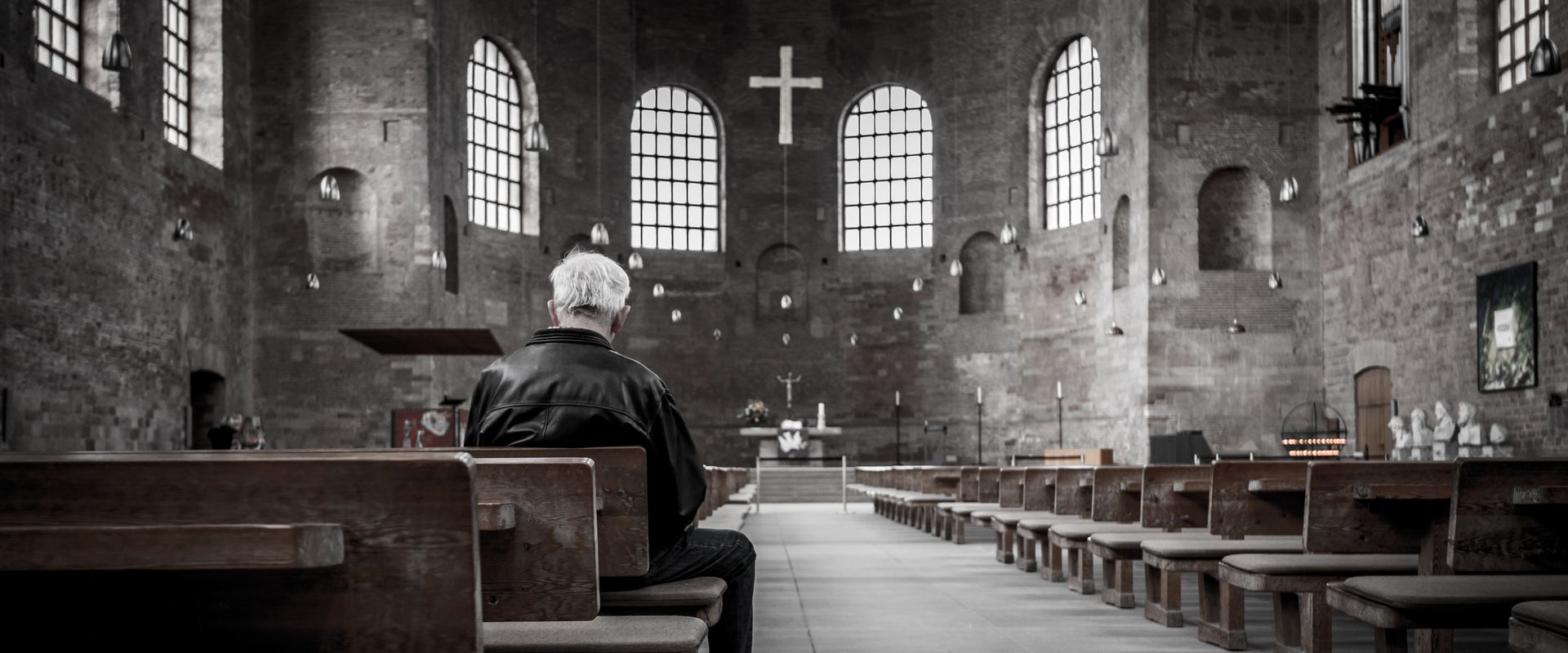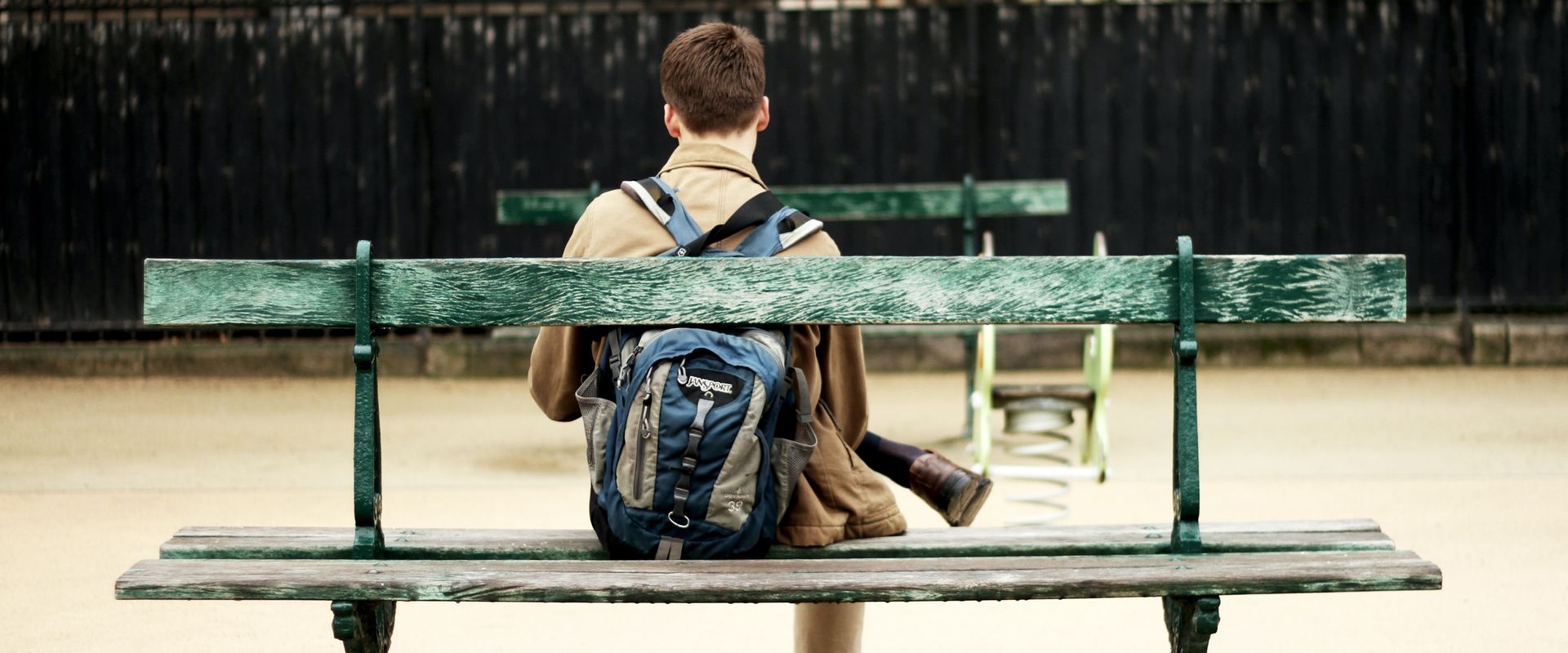It’s 5 a.m. at Revolution Hall and we are convincing Soul Asylum’s roadies it is in fact morning and their drunken game of Monopoly is over. I am about to say the sentence that usually gets the oddest looks. “We have church here in an hour. The green room is where I have communion with our musicians.”
Every blurred eye is on me, squinting to see clearly. I am familiar with both of these worlds. It was the early 2000’s and George Barna, advertiser, demographer, and data hound, had basically declared my area “post-Christian,” full of biblical illiterates. He wasn’t wrong. In a post-Christian world, this is how our church found a place.
HOME, WHERE?
I converted to Protestant Christianity. I was in my 20s and from an ethnically Catholic background. Being from an Irish American mother and an Italian immigrant father in Upstate New York, that was a standard feature. At the time, I busied myself with a couple of classes a semester at a local college, trying to give life to a fledgling record label, and reading poetry at a punk club in a former White Castle hamburger building.
My world seemed to make little sense in my new faith home. I found it alien. There were all new words, cues, and artifacts. Merging worlds seemed impossible; this was a new place with new ways. By the time I graduated seminary in 1996, I had worked to learn theology in a church and ethnic culture that I adopted or, rather, that adopted me. To the world and people I once knew, I had quietly become unrecognizable. Yet it was they who drove me forward, to ministry.
I had a vision to plant a church that would bring hope and renewal to the community in Upstate New York where I was born and raised. The city in which I attended seminary, Dallas, was a different world from Albany. To be “Christian” meant to be included with about half the state. Churches were enormous. Our Presbyterian church in the suburbs of Dallas with roughly 500 members, which would have been a monster if it were back home, was called affectionately by most “the little church.” Meanwhile, the Capital District of New York was the least biblically literate and most unchurched in the nation.
My wife and I prayed at night about returning. We spent endless discussions on what it would mean to start a church there. Everyone whose ear I could bend was hearing about the need for churches in the Northeast. In fact, a missions professor at the seminary let me research and write on reaching the area after I showed him its religious demographic numbers.
Finally, we put our four children, including one infant, in our Volkswagen Vanagon and squeezed a three-day drive into five to get back to New York State. Our return felt less like coming home than discovering a foreign land. We knew the climate would be different from Texas, but we had gotten used to the church culture there. We had to learn to speak rightly and well and think deeply about Christianity in a less church-familiar place. But would anyone at home listen, or even be able to hear it?
O, ALBANY
I could see King’s Chapel — our intended new church plant — in my mind. A white-steepled, New England flashback, but fully updated on the inside to look more like the late 20th century. That would take time, however, so in the between-time I rented unused space in a strip mall in Glenmont, the first suburb south of Albany. People would drop in or peek in through the storefront glass constantly. It was what I hoped it would be, a new village green.
I thought it a good start, the right predecessor to that permanent space for King’s Chapel. We later moved across the street from the strip mall to a new-to-us, wood-sided and steepled church straight out of the rear view mirror of Puritan history. Our own space, and the one we hoped for.
But the church became an isolation chamber. Instead of changing lives with our new space, it felt like we were put on hold. I had imagined a church in dialogue with the city — a community, not an island. Yet six days a week, the world went on. Six days a week, I sat alone in a million-dollar office for one.
There are many who are good at the slow and subtle art of course correction. It takes a lot to move an institution in a new direction without great chaos, and it takes patient people willing to spend years on small degrees of adjustment. I respect those people deeply. I am not one of them.
THE SHARP CUT OF REFORM
I was exhausted and relieved when I was offered a job overseeing church planting in the Northeast for a denomination. A younger, good leader became the new pastor of King’s Chapel, and I never intended to be a pastor again. It was 2001, and I had no idea that a revival moment for church planting was on the horizon. I burned the map and began to reimagine what church could be like in the 21st century.
I began working evenings with artists on a Sunday night “experience.” We created art without our own signatures, placing God at the center of our creativity. We transformed an old, dark, unused century-old church into a vibrant space packed with young people.
Our expressions were diverse, featuring film, photography, tactile experiences, music, and a text-based spoken-word piece — the closest thing to a sermon we offered. I shared reflections from a music stand, and it all felt more like reading at the QE2 in 1988 than a traditional church. Often, we would perform in the dark or on the side of the stage with minimal lighting from candelabras. We had a spooky-is-the-new-mystic vibe to be sure.
Somewhere in the mix of poetry, art-minded Christians, and church planting, a new direction was becoming clear. We were merging art and spirituality in a way that felt authentic and transformative. Instead of a cul-de-sac of questions, the canvas was clean. The possibilities seemed endless. It had a lot to do with being a missionary, which has a lot to do with the incarnation of Jesus Christ.
THE PLATFORM OF PRESENCE
The most important formula for us was John 1:14, which says that Jesus tabernacled among us, full of grace and truth. It was only by being fully present in the community that we could work closely enough to know what grace it needed in each situation. We needed to be in the midst of the chaos, the pain, and the joy of our city to truly understand the needs of the people and earn a place there.
Our job was not to judge or condemn, but to offer hope and love to those around us by pointing them to the one who closed a gap greater than place and time between cultures. We wanted to create a space where people could come and be themselves, a place where they could find acceptance and belonging. By living out the formula of John 1:14, we were able to create a church that was truly part of the community, a church that was a light in the darkness and a beacon of hope to all who were searching for something more.
A PLACE CALLED REVOLUTION
Revolution Hall in Troy, New York, was an unusual place for a church to meet, and this was especially true more than a decade and a half ago. The concert venue, located in a “transitional” end of town, was owned by a microbrewer and hosted concerts that went on into the early hours of Saturdays. Yet to me it was the most obvious place to gather. Like the downtown of several brownout cities in the turn of the century, artification was happening: The aging downtown infrastructure of another era was inexpensive, and artists were coming in. Entrepreneurial ventures were taking off in the wake of the transformation. When the “adult” store that offered “assisted showers” closed, a photo gallery and camera store opened. The neighborhood was starting afresh, and so was the church. It was a place where we could reimagine what church could be like among, well, my people.
It was a far cry from the traditional church experience. Yet I was surrounded by people who embraced a sense of community that extended beyond the walls of the building. We experienced everything together, from dealing with ejected drunks outside our front door to that day we had to convince the road crew for Soul Asylum that it was Sunday and their Monopoly game had to end.
We would not own any building or property for the entire 17 years of my pastorate there. Each Sunday, we had to set up and tear down our church at Revolution Hall. We had to figure out where we would work, where the kids would gather, and where larger groups, like the bands, would meet. We had to share the space.
Secular space and sacred space were no longer segregated. Like the incarnation, we tabernacled, merged the two, closed the gap. Terra Nova Church was a place of fresh ground.
SHARED AND SACRED SPACE
We started holding all of our meetings in a local coffee shop, recognizing the importance of being present in the community. It was a simple step, but it made a big difference. We were able to engage with people in a more personal way, and we began to build relationships that went beyond just Sundays.
We rented office space with full-story windows on the street. The storefront, a premium space, was to be shared too. Here we created an art gallery, which showcased the work of local artists. This not only gave us an opportunity to support the arts in our community, but it was also a space for people to gather and connect.
In addition to the art gallery, we rented another space and set up an office for two. We thought of it as a small business incubator. A pastor at the church who had come to us as a banker a few years earlier, oversaw it. We had recognized that many young entrepreneurs in our church had a passion for the arts and wanted to start businesses in our city. We were able to provide them with the support they needed to get started, whether it was through mentorship or funding. We were part of our community. We helped to revitalize the local arts scene and gave young people in our church a chance to help build an entrepreneurial business base, a chance to seek the welfare of the city and its future.
Through these initiatives, we were able to connect with people in new and meaningful ways. We were no longer simply a Sunday morning destination. We were grounded in tradition as well contextualized for our community. For us, that made all the difference.
PASTOR YOUR CITY, AND YOUR CITY WILL BE YOUR CHURCH
We wanted to engage with our community, and that meant meeting people where they were. So, we started a discussion group for theology at the local microbrewery, and we held “cinema and spirit” events to discuss Christian images and theology in film at the local arts center. We tasked groups to clean up a neglected park, and soon the city began to take notice.
The city began to speak to us. The microbrewery owners asked me to “bless” their bar on St. Patrick’s Day. The high school asked if we could clean the park the week of prom so they could have photos taken there. When some folks in our church played in a corn hole tournament, we invited every business we could connect with to send an employee team for sponsorship money — then all the money went to the Boys and Girls Club in the city. We began to think about engagement all the time.
Because the system of care for the homeless was lagging, we created several volunteer opportunities overseeing shelter in large (and largely empty) old churches, feeding people at a kitchen, and running art therapy at a transitional shelter. One homeless agency director told me they were nervous about inviting us, thinking we would just preach to people. She later told me she viewed our church as her emergency volunteer staff.
I came to believe that if you pastor your city, your city will be your church. I had come to disbelieve in insulation, whether intentional or accidental, or that Sunday was the best point of connection to a community. The day my heart was more full than it had ever been in ministry was when our city council declared us the citizen of the month.
NORTHEAST, EVERYWHERE
Upstate New York was a bellwether, a canary in a coal mine. What we experienced there is coming, or has already arrived, in a city near you. There is a dissonance in our worlds made clearer each day. When we separate our worlds — even the buildings — both the church and human flourishing lose. The earth is the Lord’s and the fullness thereof, the world and those who dwell therein, and his church, like his Son, must reside there.





